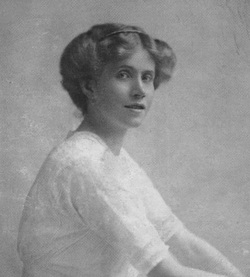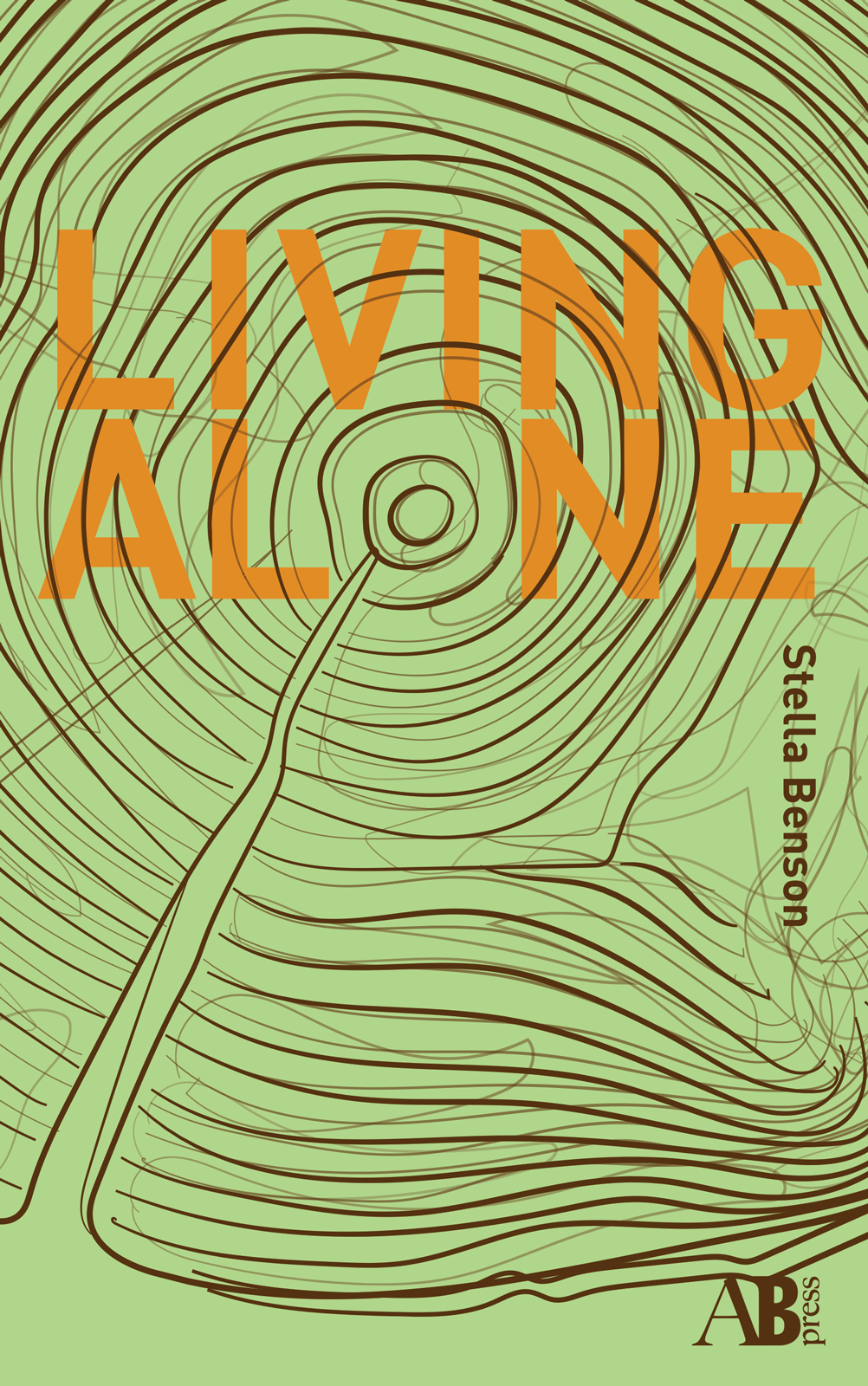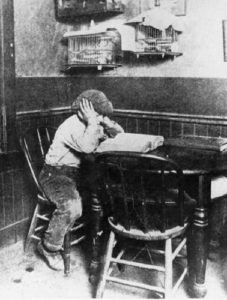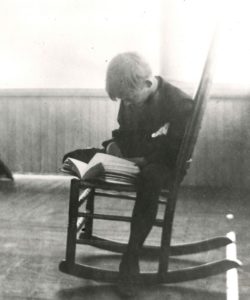Biography
 It is surprising that Stella Benson’s books have been so ignored since she died; even Virago Press found no reason to reprint them. Yet her writing is vibrant, and there is a pronounced energetic wit that accompanies all her observation. The New Zealand poet and novelist Robyn Hyde, who was so clearly influenced by Benson, declared that she would “rather be Stella Benson than anyone else in the world.” Perhaps Benson wrote only one mature novel of significance, Tobit Transplanted. Her strenths as a writer were surpassed by others of her time: her wit and light sarcasm can be found in Elizabeth von Arnim, her use of fantasy in Lord Dunsany and Ronald Firbank, her accounts of the social history of her time bettered by many others. Her flowing style and graceful syntax can be seen elsewhere in abundance immediately after the First World War, and she never incorporated modernist tendencies (although she read modernist writers voraciously). But her attempt to transpose the imaginary, her dream world and her “thought people,” and make them so part of our real world so that we cannot clearly see the join, is bold and interesting. Her books are difficult to categorise or brand, and it is not unlikely that she would have rejoiced that, a hundred years after its first publication, Living Alone is held still as a work of secure individuality and originality, although unlikely to be held as a lost masterpiece. It is, perhaps, Harry Potter meets Louis Theroux.
It is surprising that Stella Benson’s books have been so ignored since she died; even Virago Press found no reason to reprint them. Yet her writing is vibrant, and there is a pronounced energetic wit that accompanies all her observation. The New Zealand poet and novelist Robyn Hyde, who was so clearly influenced by Benson, declared that she would “rather be Stella Benson than anyone else in the world.” Perhaps Benson wrote only one mature novel of significance, Tobit Transplanted. Her strenths as a writer were surpassed by others of her time: her wit and light sarcasm can be found in Elizabeth von Arnim, her use of fantasy in Lord Dunsany and Ronald Firbank, her accounts of the social history of her time bettered by many others. Her flowing style and graceful syntax can be seen elsewhere in abundance immediately after the First World War, and she never incorporated modernist tendencies (although she read modernist writers voraciously). But her attempt to transpose the imaginary, her dream world and her “thought people,” and make them so part of our real world so that we cannot clearly see the join, is bold and interesting. Her books are difficult to categorise or brand, and it is not unlikely that she would have rejoiced that, a hundred years after its first publication, Living Alone is held still as a work of secure individuality and originality, although unlikely to be held as a lost masterpiece. It is, perhaps, Harry Potter meets Louis Theroux.
STELLA BENSON (1892-1933) was descended, via her mother’s side, from Samuel Pepys’ sister. Such anecdotal heritage is a peculiar coincidence, for her diaries — forty-two volumes reside in the Library at Cambridge University, she had been encouraged by J. B. S. Haldane to deposit them there, to be sealed for fifty years after her death — provide a rich resource: of her own creative energy, of a unique life with much travel, sharp observation of foreign lands and people, of the colonial life and ethos at the time (her private scribbling became often the blueprint for much of her journalism), of her encounters with the good, the great and the ordinary, and of issues of great social concern. She kept this diary routinely and assiduously from the age of ten; her last entry, after she had contracted pneumonia a month short of her forty-second birthday, was simply, “I fell into bed.”
Her life had been marred by illness from an early age. As an elder teenager she had spent seventeen months in Europe, mainly Switzerland, to recover from the constant bronchial complaints and pleurisy that had restricted her schooling in earlier years; she became permanently deaf in her right ear when fifteen. Her diary recounts her fears of death, she was aware that the prognosis for advanced tuberculosis was not good. She had been diagnosed officially as consumptive in late 1915, and accordingly she lived life to the full and her travel itinerary, at least after an eight month-long honeymoon escapade in America, was rarely conducive to a stable life. Her husband, James O’Gorman Anderson, whom she had met in 1920 and married in September 1921, had failed to find work in America and took up as an officer in the Chinese Customs Service. Benson followed him around Indo-China; her last trip in 1932 to Hainan, Paktoi and Bali proved to be not only uncomfortable but also fatal. She died in a French hospital in northern Vietnam.
As well as her illnesses, familial malfunction played its part in shaping her early life. Her father, who she discovered only later had been alcoholic, left the family home when she was fourteen and was seen afterwards infrequently; he degenerated mentally and died five tears later. He had discouraged his daughter from writing, at least until she was older and had more experience of life, but in his absence various aunts and extended family declared their interest in Stella’s welfare, particularly the novelist Mary Cholmondeley, her favourite aunt, whose book Red Pottage had been an international bestseller in 1899. Aunt Mary encouraged wider reading, and gave Stella her first dog also. Dogs were as important as family to Stella and became her true companions when she was abroad: “almost I thought as puppy,” she wrote.
Stella had an awkward but respectful relationship with her husband; her diaries note their growing unease together. They undertook separate travel plans in late 1928 though they united again in April 1929. James had artistic sensitivity and admired greatly his wife’s writing, although he felt ill at ease with all her literary friends apart from Winifred Holtby. Stella had not impressed her Irish in-laws. She had little sympathy for the rigours of colonial life or his work; her journalism and its critique of colonial life was the cause of professional embarrassment to her husband. Sex was problematic for Stella, and with her reluctant blessing James took a mistress when in China; there are also entries in Stella’s diary concerning her own various infatuations, clearly never requited, and hers seems to have been a compulsive yet repressed sexuality, which vexed her conscience. Although they wished otherwise, the marriage produced no children.
When in England or America (Stella had met many writers there, especially in Berkeley and San Francisco) her social diary was full. Winifred Holtby and Naomi Mitchinson were loyal friends, so too the brilliant historian Eileen Power, Rebecca West, Sydney Schiff, Rose Macaulay, C. K. Ogden (who Benson described brilliantly as the “scientific Gertrude Stein”), Vera Brittain, May Sinclair, Vita Sackville West and the Woolfs also. But when abroad as her husband’s diplomatic accessory — from the summer of 1922 until the end of her life, relieved only by his sporadic furlough — Stella was often isolated, by worsening deafness, by the disdain she held for her supposed if informal public role and duty, or by a lack of common interest with the wives of her husband’s acquaintances. When in Hong Kong she would have often as many as three or four functions to attend each day, and she was far more energised protesting against the wrongs of licensed prostitution in Hong Kong, where she was at odds often with the missionary societies’ morality. This friendless state afforded much time for writing; indeed writing was necessary for her well-being. In the Kwangsie Province in December 1929, fretful for safety amidst military movement, Benson noted, “I have almost nothing I value here — except the typescript of Tobit — and these diaries.” (Tobit Transplanted was the novel she engaged with then, to be published in 1931 and to win the esteemed Parisian Femina Vie Heureuse Prize in 1932, also the Silver Medal of the Royal Society of Literature; it had been published first in the United States in 1930 as The Far-away Bride.) It seems as though the more adverse her situation the more she fell back on writing. Stella Benson completed seven novels, one more remained unfinished at her death; two volumes of short stories, written mostly for private presses and journals; a transcribed biography of an expatriate Russian she had befriended in Hong Kong (she referred to this as a “non-book” even though it gained some attention in the United States); poetry, including a selected verse published posthumously; two books of travel pieces, mostly covering Hong Kong and China; much journalism.
Benson’s first novel, I Pose, was published in 1915 and was moderately well received. It is riddled with piquant and satiric humour. Its two lead characters are termed The Gardener and The Suffragette, and the book tackles the sincerity of the suffragette movement, a burning social issue of the day. She was now aged 23: this novel reflected Benson’s experiences of militant suffragette idealism and her first taste of independent living, subsidised by a modest annuity from her family. Despite being so well travelled (she had spent time immediately before the War in Jamaica), her illnesses and her father’s absence had meant that hitherto she had been swaddled with maternal care; she more than hinted of her resentment of such a limited life in her diaries. Early in the war she had taken a room in a London club in Haggerston, East London, and volunteered for social work. In 1915 she undertook a salaried post in Hoxton for the rather supremacist Charity Organisation Society, which sought to determine who was deserving of charity (its “scientific” principles were designed to “expose the cunning of the slothful poor and help rectify their immorality”). In 1916 Benson worked for the Wounded and Missing Officers’ Bureau of the Red Cross. In 1917 she worked on the land in Berkshire, hard toil for which she was not physically qualified; she was absent often. The end of her time there came after she had staged a demand from the farmer for a wage increase for the female workers. In-between these snatches of work there were periods of rest to recover from poor health. She wrote much of This Is the End, her second novel, in 1916 outside of London, in Cornwall especially. This Is the End mixes reality and reverie, and introduces the heroine’s “Secret Friend.” (In Benson’s childhood diaries she displays imaginative invention — her “thought peope” or “imaginary friends”; such juvenile interest in psychology was a constant throughout her life.) “It isn’t much of an inspired story,” she wrote, before she had started its writing in earnest, and, unlike her first book, it was not published in America.
Benson started work on Living Alone, her third novel, in 1917, not long after This Is the End was published; the book was finished in California, where she had sailed in July 1918 (taking her unfinished manuscript cautiously with her as she was concerned with American censorship law). It was published in late 1919 whilst Benson was still abroad, enjoying both the good weather and a first taste of solo travel, and preparing to move on to the country she had most wanted to visit since childhood, China. Living Alone incorporates in a more exaggerated way her own experiences, especially of life during the War and the chaos and upheavals of London life. It is an accurate reflection of wartime London experienced by a wealthy, well-intentioned young lady, although she had become disillusioned by the C. O. S.’s bureaucracy and purpose. She had been criticized for her “promiscuous charity.” “The more committees you belong to,’ she wrote, “the less of ordinary life you will understand.” The book’s satirical tone was encouraged perhaps by her reading of H. G. Wells’ The New Machiavelli, a cause célèbre of its time that took on the hypocrisy of Victorian and Edwardian morality; it had left Benson “rather stunned.” Living Alone had taken her effort and time to write and she had not felt satisfied with it always. Her confidence grew and the novel had begun to take shape by May 1918; she wrote that “this next book is going to be a roeg [sic, rogue] & will annoy people,” presumably because of its satire (her war years witness her growing antagonism to the middle class aping of upper class attitudes) and the book’s content of fantasy and witchcraft, mixed with an otherwise real world of characters facing rationing, congestion, wartime propaganda, and a need to shelter from air raids. Imposed upon it is a magical hinterland: a witch (who runs a boarding house called the House of Living Alone) and a wizard (an illiterate soldier). Her interpretation of the world during the War was such that she declared it had “lost the trick of being real,” and her writing is far more imaginative than anything she had attempted hitherto; much of Benson’s inner self is on display, often as revealed in her diaries. Living Alone is overtly an autobiographical book; even so she claimed that it was her first objective piece of writing, “in some measure a book about other people.” Sarah Brown, the book’s heroine, likes dogs but loathes physical intimacy with humans, has bronchial illness, and cannot regard herself as a “real woman,” feeling lost in a sea of tittle-tattle. Her initials (she is referred to throughout with both her names), are those of the author. Above all else, Sarah Brown lacks confidence and is self-deprecating.
A lack of self-confidence may have been Benson’s Achilles’ heel. It might have been even that she did not think that she needed be taken so seriously as a novelist; the epigraph to Living Alone — “This is not a real book … nor should it be read by real people” — might serve as a subliminal defence of that position. She seemed content with her peripheral role in the world of letters and, after her death, her husband wrote that she had “no thought of not being sufficiently appreciated.”
The novelist Phyllis Bottome wrote that Stella Benson had spoken to her of her lack of comfort with the “extraneous props” of birth and wealth, and how she “doubted how much of herself would survive what she felt to be her unfair advantages of birth and position, so she stripped herself to the bone, to face the world, unprivileged.” She had inherited her father’s sensibilities: he had been wracked with guilt over the source of his family’s slave-owning past and had travelled to Sierra Leone on a “pilgrimage of reparation,” and had even housed some native children on the family estate. In a letter of 1924 Stella Benson admitted that her first novels were written in “defensive illusionment,” a state of mind that might describe knowledge that she was wanting in the realities of life, as her father had told her.
There remains a regretful sense of a lack of fulfilment to Stella Benson’s writing career, both in her world view and her technique. She had told Phyllis Bottome before she died that “I feel I have got my tools now but I’m only just beginning to know how to handle them!” She had made sense of her life through writing, yet she refused still so often to recognise the esteem which other writers held her, perhaps wilfully. Flattered by Virginia Woolf’s overtures of friendship, she couldn’t quite feel worthy of it. Yet Virginia Woolf thought so highly of Benson that when she received news of her death, Woolf recorded in her diaries that “when a writer like Stella Benson dies, that one’s response is diminished; Here and Now won’t be lit up by her: it’s life lessened.”





 Allen Lane, the founder of Penguin books, was a man who liked to be seen riding a virtuous horse though his spurs were as sharp as an abacus: money was his game and he chanced to sell his new Penguin range through his Penguincubator in 1937, in tobacconists alongside newspapers and boiled sweets, also a few placed as concessions in branches of F. W. Woolworth’s. One Penguincubator was commissioned at Charing Cross Station, placed next to a machine vending cigarettes. (6d the price of a packet of fags, 6d the price of the first Penguins, though am not sure if Lane had thought through how you were supposed to keep the books alight without a filter.) Booksellers in the Charing Cross locality objected to the Penguincubator and it was removed. It would seem that they were never successful in any case.
Allen Lane, the founder of Penguin books, was a man who liked to be seen riding a virtuous horse though his spurs were as sharp as an abacus: money was his game and he chanced to sell his new Penguin range through his Penguincubator in 1937, in tobacconists alongside newspapers and boiled sweets, also a few placed as concessions in branches of F. W. Woolworth’s. One Penguincubator was commissioned at Charing Cross Station, placed next to a machine vending cigarettes. (6d the price of a packet of fags, 6d the price of the first Penguins, though am not sure if Lane had thought through how you were supposed to keep the books alight without a filter.) Booksellers in the Charing Cross locality objected to the Penguincubator and it was removed. It would seem that they were never successful in any case.